South Sudan Flag Meaning
Three horizontal stripes of black, red, and white with a blue triangle at the hoist containing a yellow star, representing the African people, the blood shed for freedom, peace, the Nile River, and the unity of the states, designed for the world's newest country upon independence in 2011.
- Continent
- Africa
- Adopted
- 2011
- Ratio
- 1:2
- Colors
- black, red, white, blue, yellow
- Designer
- Unknown
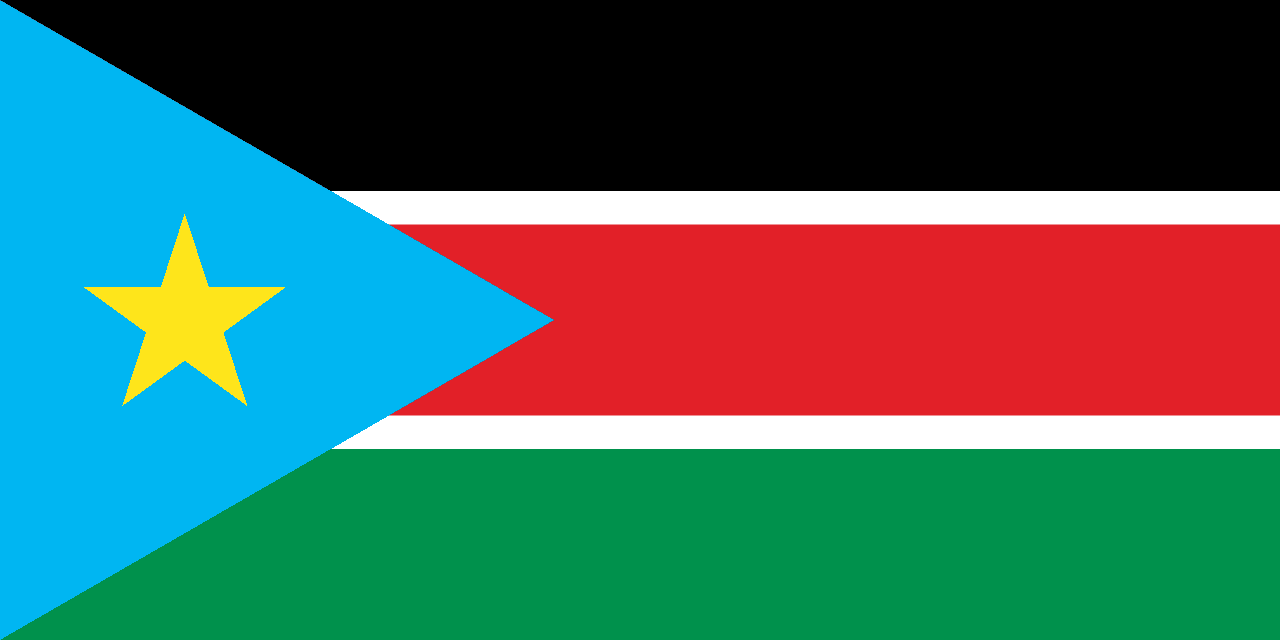
Symbolism
Black Stripe: Represents the black African people of South Sudan and their heritage, symbolizing the African identity and the majority population that fought for independence from Arab-dominated Sudan.
Red Stripe: Represents the blood shed by martyrs during the long struggle for independence, symbolizing the sacrifices made during the Second Sudanese Civil War and other conflicts for freedom.
White Stripe: Represents peace, purity, and the desire for harmony, symbolizing the hope for reconciliation among different ethnic groups and the aspiration for a peaceful future after decades of war.
Blue Triangle: Represents the Nile River, which flows through South Sudan and provides life-giving water, symbolizing the country's natural resources and the importance of water for agriculture and survival.
Yellow Star: Represents the unity of the ten states of South Sudan and the bright future of the nation, symbolizing hope for prosperity and development as the world's newest independent country.
History
- Pre-Colonial Era: Various Nilotic and Bantu-speaking peoples including the Dinka, Nuer, Shilluk, and others inhabited the region, developing pastoral and agricultural societies along the White Nile and its tributaries.
- 1820s-1880s: Egyptian expansion under Muhammad Ali brought the region under Khartoum's control, with slave raids devastating local populations and creating lasting resentment between north and south.
- 1898-1956: Anglo-Egyptian Sudan administered the south as a separate region with different policies, education, and development, creating the foundation for future north-south divisions.
- 1955-1972: The First Sudanese Civil War began even before independence as southern soldiers mutinied against northern domination, fighting for autonomy and equal treatment in the new Sudanese state.
- 1972-1983: The Addis Ababa Agreement granted southern autonomy and ended the first civil war, bringing a decade of relative peace and limited self-government to the region.
- 1983-2005: The Second Sudanese Civil War erupted when Sudan imposed Islamic law and violated the autonomy agreement, with the SPLA fighting for independence under John Garang's leadership.
- January 9, 2005: The Comprehensive Peace Agreement ended the civil war and provided for a referendum on independence after six years of interim autonomy and power-sharing arrangements.
- January 9-15, 2011: The independence referendum saw 98.8% vote for separation from Sudan, with overwhelming support across all regions and ethnic groups for creating an independent South Sudan.
- July 9, 2011: South Sudan gained independence and adopted the current flag, becoming the world's 193rd country and Africa's 54th independent state amid international celebration.
- December 15, 2013: Civil war erupted between President Salva Kiir and former Vice President Riek Machar, creating ethnic conflict between Dinka and Nuer communities and devastating the young nation.
- 2013-2020: Multiple peace agreements failed to end the civil war permanently, with hundreds of thousands killed and millions displaced in one of the world's worst humanitarian crises.
- 2020-Present: A fragile unity government has been established, but South Sudan continues to face enormous challenges with poverty, corruption, ethnic tensions, and limited infrastructure.
Trivia
- South Sudan is the world's youngest country, having gained independence on July 9, 2011, making it less than 15 years old as a sovereign nation.
- The flag represents a country that fought one of Africa's longest civil wars, with the Second Sudanese Civil War lasting 22 years and killing over 2 million people.
- South Sudan has over 60 different ethnic groups speaking more than 60 languages, with English as the official language and Arabic also widely spoken.
- The country sits on significant oil reserves that provided 98% of government revenue, but production has been disrupted by civil war and disputes with Sudan over pipeline fees.
- Traditional cattle culture remains central to many communities, particularly the Dinka and Nuer, with cattle serving as currency, status symbols, and sources of conflict.
- The flag flies over a country where about 83% of the population lives in rural areas, making it one of the least urbanized countries in the world.
- South Sudan faces severe challenges with only 27% literacy rates, limited healthcare infrastructure, and some of the world's worst maternal and infant mortality rates.
- The White Nile flows through South Sudan, providing water resources and supporting agriculture, though seasonal flooding and droughts create ongoing challenges.
- Traditional music and dance play important roles in cultural identity, with different ethnic groups maintaining distinct artistic traditions and ceremonial practices.
- The flag represents a country where Christianity (majority) and traditional African religions coexist, with about 60% Christian and 33% practicing traditional beliefs.
- South Sudan has struggled with internal displacement, with millions of people forced from their homes by conflict, drought, and flooding since independence.
- The country lacks basic infrastructure including paved roads, electricity, and clean water systems, with most development having been disrupted by decades of warfare.
- Traditional foods include sorghum, millet, and various vegetables, with dietary habits adapted to the semi-arid climate and pastoral lifestyle of many communities.
- South Sudan joined the United Nations and African Union immediately upon independence but has struggled to build effective government institutions and maintain peace.
- Despite enormous natural resource potential including oil, minerals, and agricultural land, South Sudan remains one of the world's poorest and least developed countries.
Related Countries
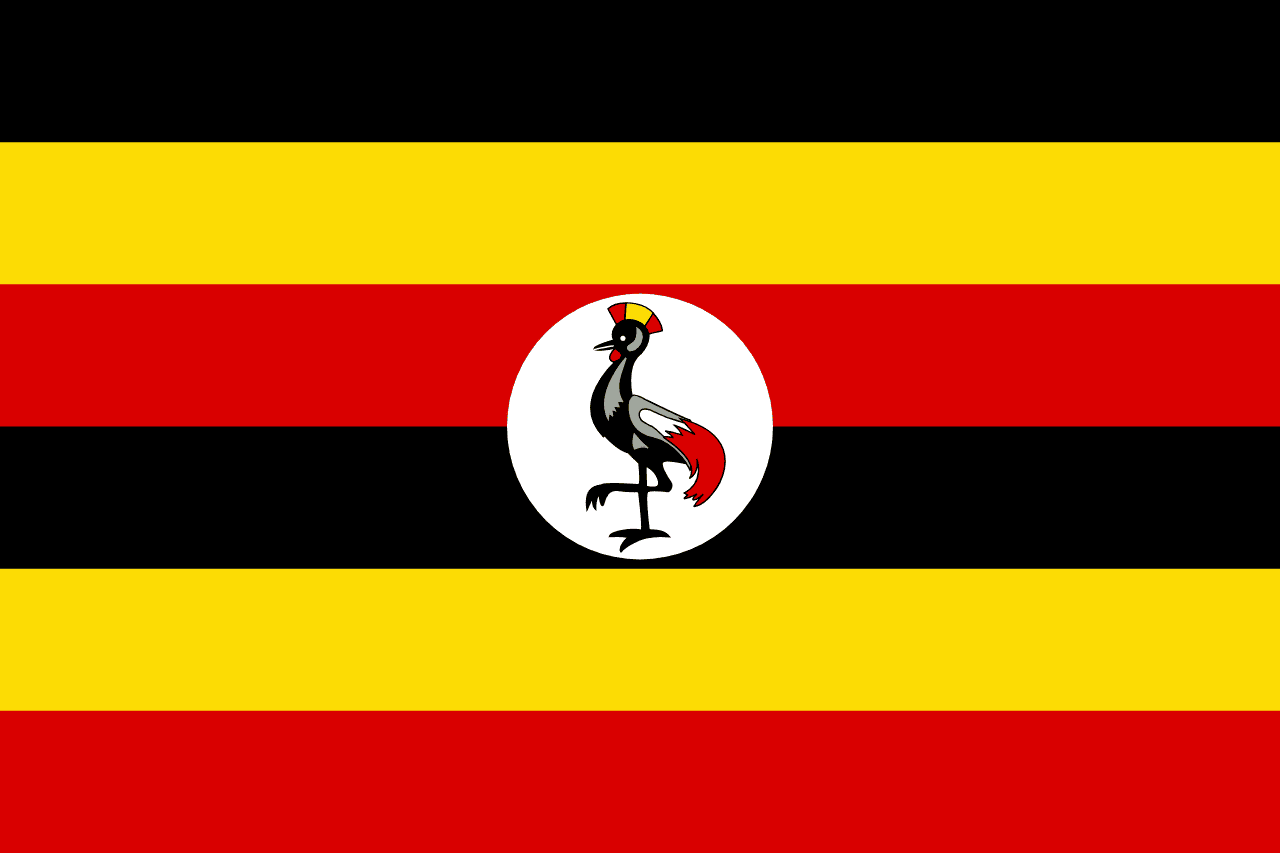
Uganda
Africa
Six horizontal stripes alternating black, yellow, and red (repeated twice) with a white circle containing the grey crowned crane in the center, representing the African people, sunshine and prosperity, brotherhood and unity, and the national bird that symbolizes Uganda's forward movement.
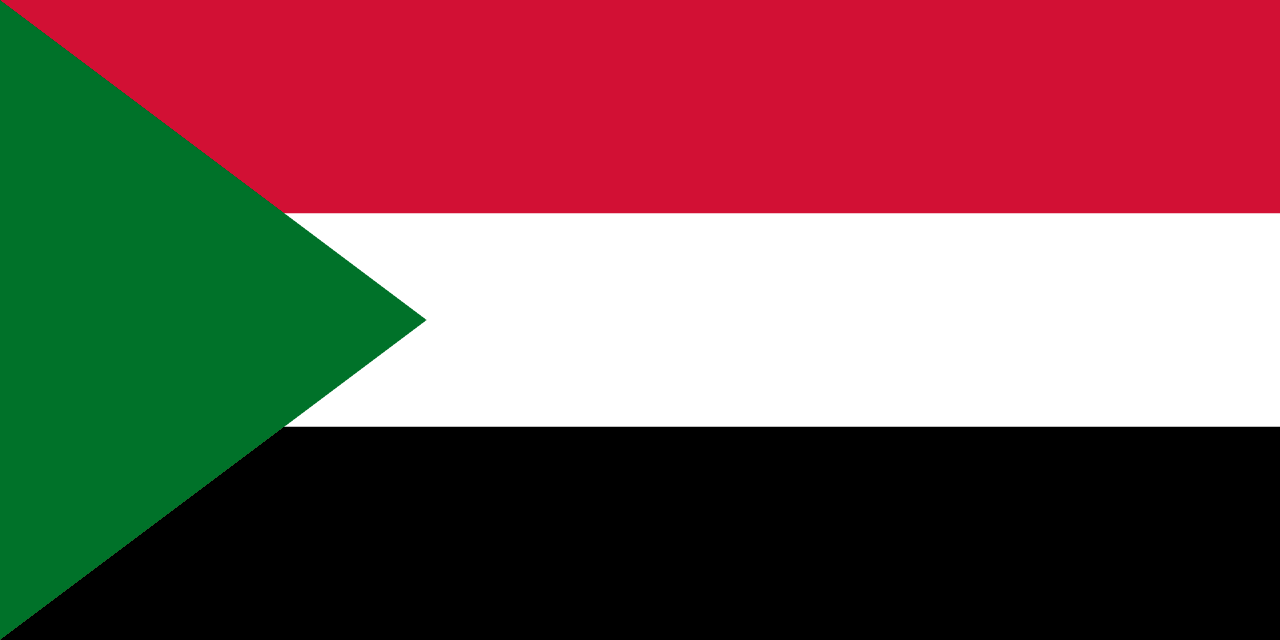
Sudan
Africa
Three horizontal stripes of red, white, and black with a green triangle at the hoist, representing the Pan-Arab colors of the struggle for independence, the blood shed for freedom, peace and light, the battles against oppression, and the prosperity and agriculture of Sudan.
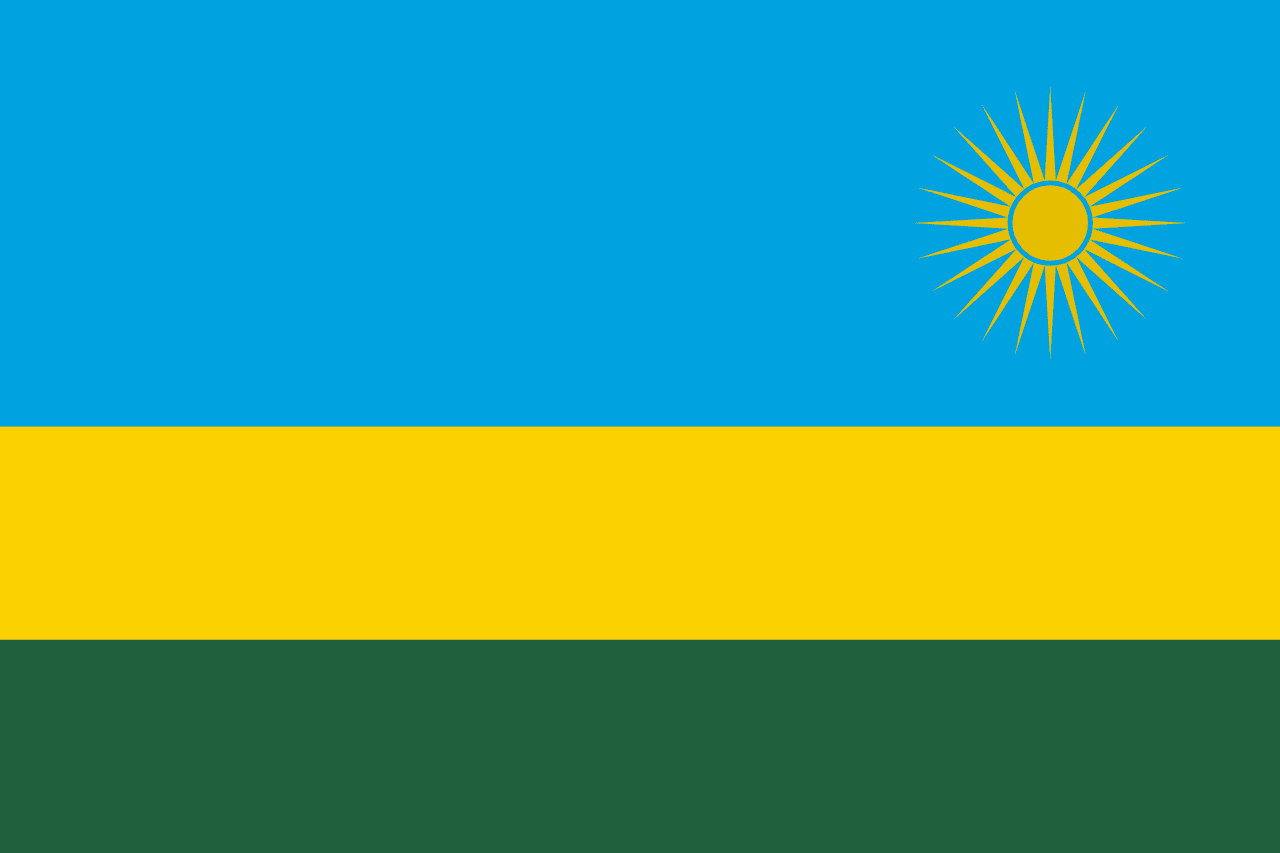
Rwanda
Africa
A tricolor of blue, yellow, and green bands with a golden sun in the upper fly corner. Adopted in 2001, the flag symbolizes unity, hope, and a new era of peace following the 1994 genocide.
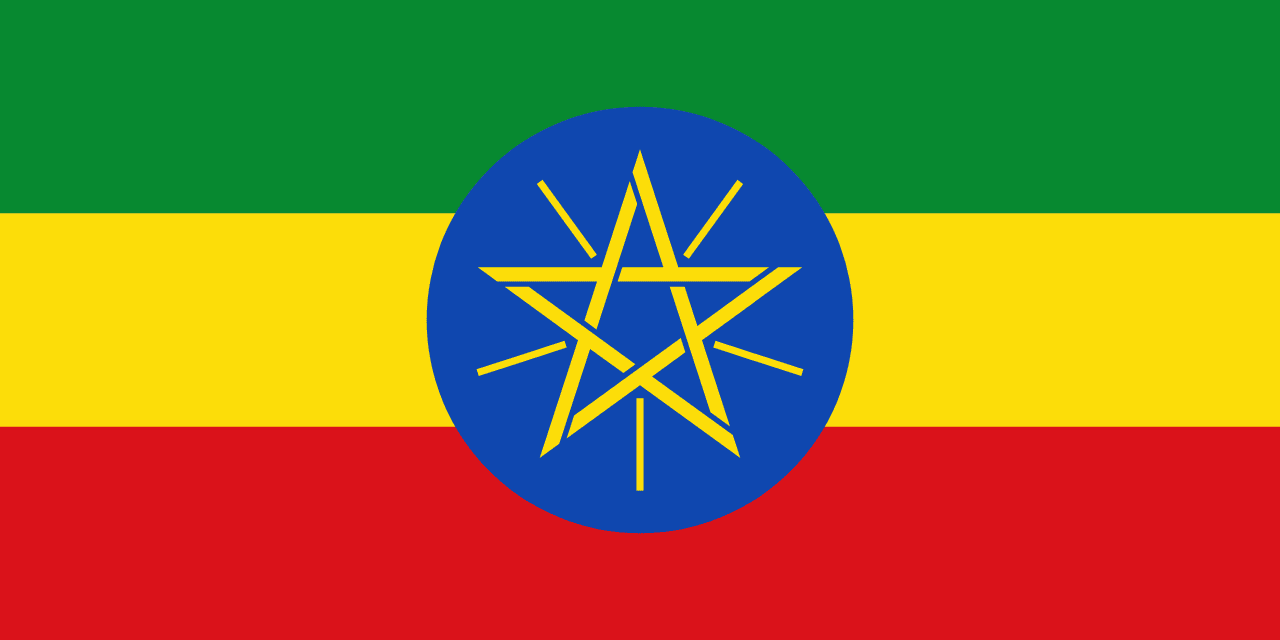
Ethiopia
Africa
Three horizontal stripes of green, yellow, and red with a blue circle containing a yellow five-pointed star in the center, representing the original Pan-African colors, the diversity and unity of Ethiopia's peoples, and the country's ancient independence.
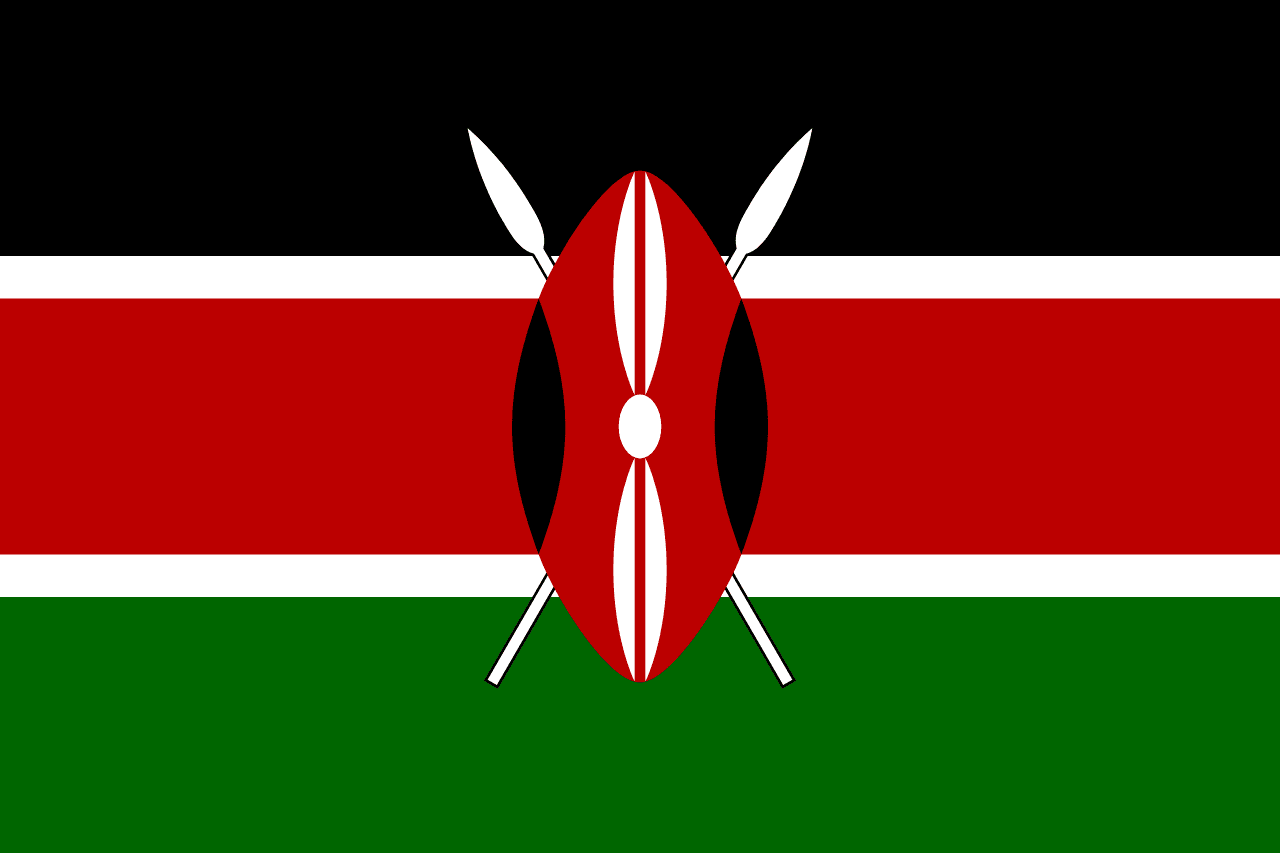
Kenya
Africa
Three horizontal stripes of black, red, and green separated by narrow white stripes, with a traditional Maasai shield and two crossed spears centered on the flag, representing Kenya's struggle for independence and the defense of freedom.
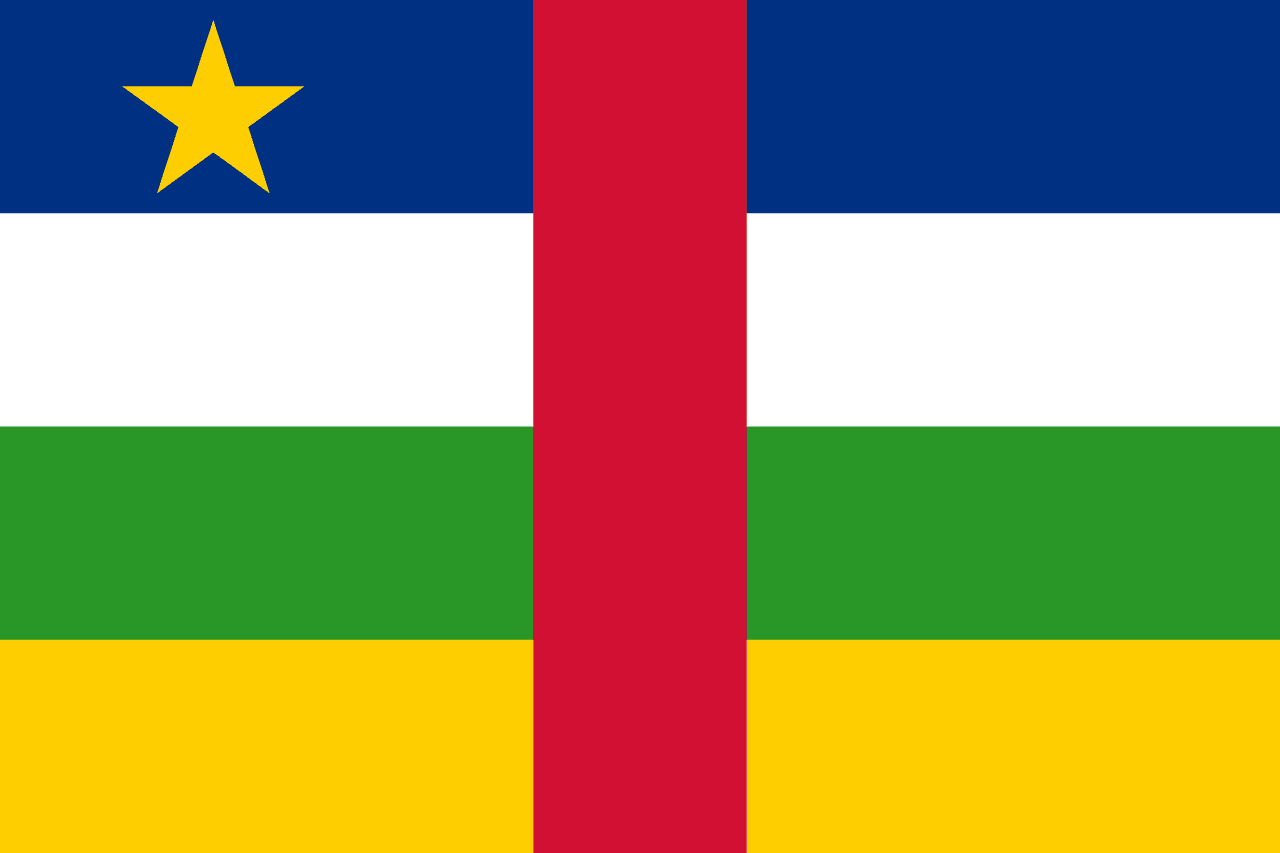
Central African Republic
Africa
Four horizontal stripes of blue, white, green, and yellow with a vertical red stripe through the center and a yellow five-pointed star in the upper hoist, combining Pan-African and French colors to represent unity and independence.